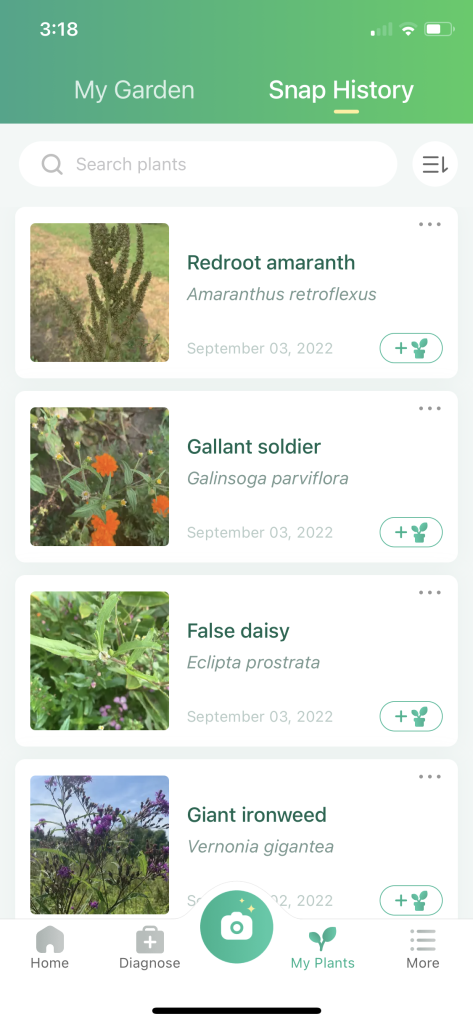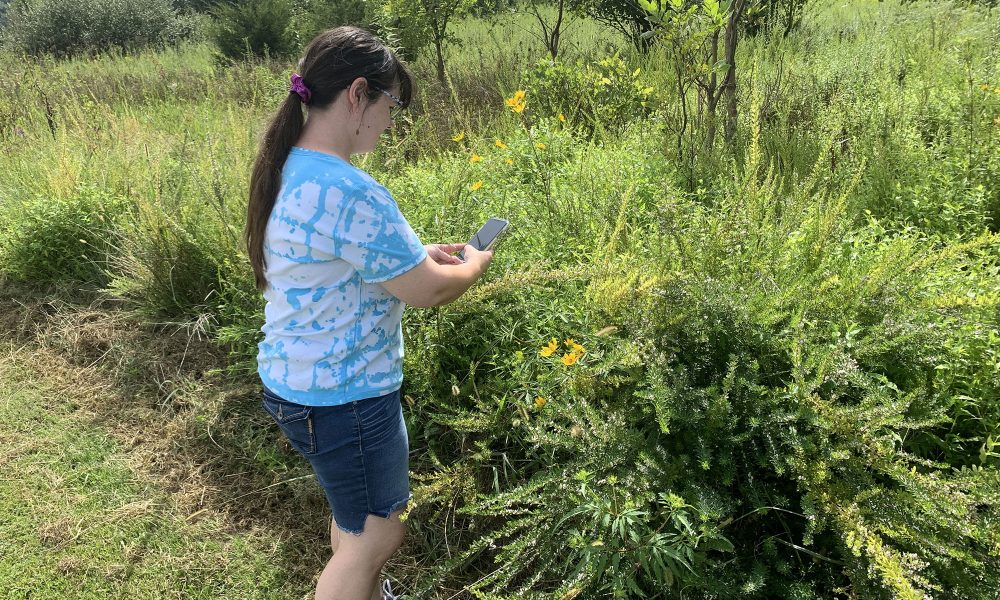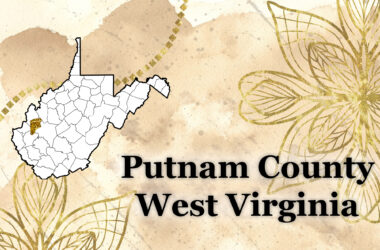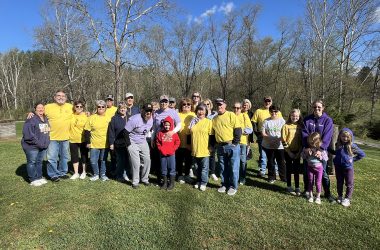Betsy Allen identifies various plants and flowers at the wildlife sanctuary on the Eleanor side of the Winfield Lock and Dam. (Photo by Ron Allen)
I do not download many apps for my phone, for I prefer to keep as much memory available as possible for photos and videos. However, I wanted to get an app which would allow me to identify wildflowers and other plants. After searching the Apple App Store for such a program, I found one called PictureThis – Plant Identifier. While the company that produced the app wants you to pay a $29.99 yearly fee, you can still use PictureThis for free, although some of the app’s resources will not be available.
PictureThis uses your smartphone’s camera feature to take photos of plants, which it then scans and shows a result in a matter of seconds. An internet connection is required to use the instant scan feature, but users can also take photos of plants and then ask the app to scan them in areas where there is limited or no connection.
Most of the results I have gotten from PictureThis seem to be spot on. Most entries feature a list of names for that species, although not every regional name will be listed. The program will even tell you if the plant is sickly – although this feature can also be triggered if you are attempting to identify a plant in low light conditions. While the app can identify the species of a plant, it cannot tell you the specific variety. For instance, you could use PictureThis to scan a zinnia, and it would correctly identify the flower, but it wouldn’t be able to tell you the name of that particular variety.
I have gotten some incorrect results while scanning tree bark patterns – the program confused a pine tree for a maple. The app also had an extremely difficult time correctly identifying a Japanese Lantern plant. The fruits of this particular plant have a bright orange husk which resemble paper lanterns. Some of the possibilities were Coral Lily (the app confused the husk for a flower), Virginia Groundcherry, and a Carolina Horsenettle (scan was of leaves alone). A search for Japanese Lantern on Wikipedia suggests that the plant might be Alkekengi Officinarum, which is also known as Chinese Lantern, Japanese Lantern, Bladder Cherry, Strawberry Groundcherry, or Winter Cherry. Japanese Lanterns are in the Solanaceae (Nightshade) family, and several of the possible matches were also in this family, so possibly this is where the confusion lies. So far, this plant continues to mystify PictureThis.
Out of morbid curiosity, I have used the app to scan photos in which no plants were present, just to see what it would say. The program’s AI will usually tell you that it could find no identifiable plants, but a scan of a cat’s white paws did suggest that the image in the photo might be a white fungus that grows in forests. I will admit that this particular fungus does resemble the shape of a cat’s paw, so I can understand how the AI misunderstood the image.
Speaking of fungus, PictureThis does warn the user whenever it is used to identify mushrooms or fungi. It is not safe to use this app to identify edible species, and PictureThis advises users not to touch or eat any mushroom. Foraging for mushrooms and fungi can be very dangerous, as many species have a similar appearance, and it is easy for an amateur to confuse a poisonous mushroom for an edible one. This is a case when it is best to have an expert’s advice. PictureThis also warns users not to eat wild berries unless it can be confirmed without a doubt that the plant or bush in question is non-toxic.
I have used PictureThis to identify many of the wildflowers which grow in fields and along roadsides in late summer and early autumn. Right now, there is still a lot of Giant Ironweed, Yellow Ironweed, Late Boneset, Bearded Beggarticks, Goldenrod, and Orange Jewelweed growing, although these plants are starting to die back for the season. I have also discovered a lot of vary fragrant wildflowers, such as Bearded Beggarticks. These strangely named plants look like Yellow Ironweed from a distance and yellow Cosmos close up, and have a beautiful scent that smells just like honey. A friend of mine who has anosmia (loss of smell) claimed that he thought they smelled like graham crackers.
PictureThis also keeps a record of all of the plants that you have identified. This feature can be found under the Snap History section of the app. I do not know if this list will continue to grow as pictures are taken, or if the older photos will eventually be deleted to make room for new ones.
This app is a great one to have for identifying interesting looking plants and flowers that you might encounter on your travels. Just keep in mind that the program has its limitations, although for the most part it seems to be fairly accurate.




